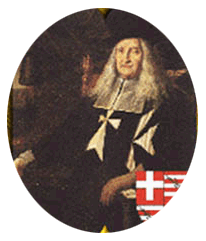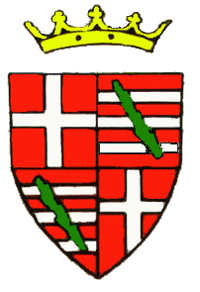



1680-1690
ON the death of Nicholas Cotoner the fraternity with respect to his successor set the most open cabals and intrigues on foot. One party nominated Adrian de Wignacourt, Treasurer of the Order, and nephew of the deservedly popular Grand Master Alof de Wignacourt. Another favoured Knight, whose merits fully entitled him to the much-coveted post, was Gregorio Carafa, Prior of La Roccella, and brother of the celebrated cardinal of that name. In strong opposition to these two candidates was Bertrand de Moretton Chabrillan, Prior of St. Giles, and a Knight of immense wealth and gifted with a mild and genial character, which had procured for him the love and respect of the whole community.
After much deliberation, the election of the new Grand Master was finally decided. The President of the sixteen Venerable Electors united in conclave gave the news to the assembly that the Aragonese Knight, Gregorio Carafa, Prior of La Roccella, member of the language of Italy, had been elected to the supreme dignity in succession to Nicholas Cotoner.
The newly elected Grand Master, desirous of emulating his predecessor, at once devoted himself to the completion of the fortifications of Floriana and of the Cottonera Lines. Colonel Don Carlos de Grunenburg, chief engineer to the King of Spain, was consulted on the subject. The principal works, which appear to have been carried out under his superintendence were the construction of four batteries at the foot of Fort St. Angelo for the better protection of the grand harbour, and the fortifications around St. Elmo.
Several successful naval expeditions in the Levant took place during Carafa's rule, and the Emperor Leopold, in 1683, addressed a very flattering letter to the Grand. Master, thanking him most warmly for his continued efforts to protect Christendom from the incessant ravages of the Ottoman fleet.
The glorious victories which John Sobieski gained over the Turks in 1683 led to the formation of a formidable alliance against the Infidel, which was inaugurated in 1684. The principal members of this league, which subsequently dislodged the Turks from the Adriatic, were the Pope, the Republic of Venice, and the Order of the Knights of Malta. It was by the united efforts of this powerful combination that Previsa, Santa Maura, and Coron fell into the hands of the Christians. Correa, general of the galleys and commander of the Maltese contingent, earned for himself an imperishable renown for his dauntless bravery in recapturing a fort, which had been taken by the Turks. After a most stubborn resistance he succeeded in planting on its ramparts the white-cross banner of the Order, but a musket ball, which struck him in the chest, put an end to his brilliant career. On the fall of Navarino, Napoli di Romagna, chief town of the Morea, was next to feel the power of the League, and after a month's siege the Turks lost their last stronghold in the Morea.
In 1687 eight galleys of the Order under the command of Count Heberstein, Grand Prior of Hungary, greatly contributed to the successful issue of the day at Castel Nuovo, and by this last victory of the allied fleets the Moslems were finally driven from the Adriatic.
The intelligence of the unsuccessful attempt of the allies at the siege of Negropont, in which the Order had to mourn the loss of many a valiant Knight besides a large number of the bravest of their soldiery, was the cause of the death of the Grand Master. He was attacked by a fierce and most malignant fever. He died, on the 21st July 1690, at the age of seventy-three, after a successful reign of ten years, during which period we find the most perfect tranquillity reigning within the Convent, and Malta prospering under his fostering care.